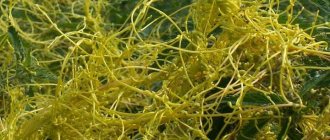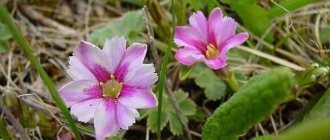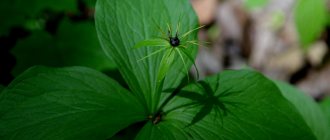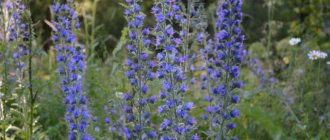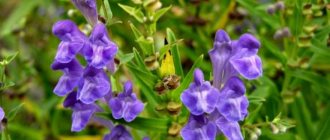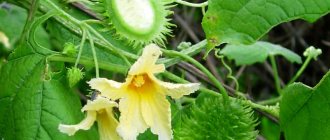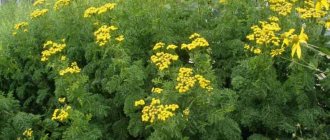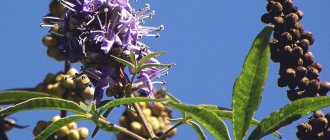Collecting sedum
Sedum is a medicinal plant. Freshly harvested herbs are most often used for treatment. This should be done during the flowering period of the plant, which begins in July and ends in October. The fruits of sedum ripen in the autumn months.
To collect grass, you should choose dry weather. It is advisable that it be in the morning hours, after the dew has evaporated from the leaves. You need to cut the grass with a sharp object - scissors or a knife. The roots should be left in the ground as they begin to be collected in the autumn months (September - October). After the roots are dug out of the soil, they will need to be cut into small pieces and dried in fresh air.
The grass is also dried in the fresh air, under a canopy, which will protect the raw material from moisture and sunlight. An attic with good ventilation is ideal for this purpose.
It should be remembered that during drying, the sedum will continue to grow, and sometimes even begin to bloom. This negatively affects the healing properties of the plant.
Therefore, three important rules must be observed:
- Before drying, the raw materials should be crushed.
- After grinding, it must be doused with boiling water.
- Before laying out for long-term drying, the sedum must be kept in a dryer or in an oven at a temperature of 60 °C. This is done for drying.
Properly dried grass will have a bright, specific smell; such raw materials can be stored for 2 years. The roots can be used for three years.
How to use sedum, useful properties and contraindications
Large sedum is a representative of herbaceous perennial plants and belongs to the Tolstyankov family. It has a huge number of varieties and species, there are more than 500 of them.
It can be found throughout Europe, the Mediterranean, China, Siberia, and Japan. Such a wide geography is due to the diversity of species: they can be winter-hardy or tropical, evergreen or deciduous. Flowering begins at the end of July and stops in October, the fruits form and ripen in late September - early October.
Article on the topic: Soap quillaya - beneficial properties, description
The roots are thickened, fusiform. The leaves are oblong-oval in shape, dark green in color, covered with a waxy coating and have a sour taste. The stems grow up to 80-90 cm in height.
Varieties of sedum
Sedum is a common plant that is found everywhere in Europe, growing in the Northern Hemisphere (in the temperate zone), the Mediterranean, Japan, China and Siberia. There are more than 600 plant species in his genus. Some of them are frost-resistant, some, on the contrary, are heat-loving. There are evergreen plants, and there are those that shed their leaves.
Sedum or hare cabbage
A variety of sedum called hare cabbage or caustic sedum is a long-lived plant. Its root system is represented by thick roots and a short rhizome. During the flowering period, hare cabbage is covered with golden or yellow flowers resembling a star in shape. In the first year of life, this variety does not produce flowers; they appear only after a year.
Sedum likes to grow in the steppes, on rocky rocks, and in wastelands. It can often be seen in the forest, where there is little shade. It can be found almost everywhere in the Russian Federation.
Those who want to use this plant for therapeutic purposes should remember that it is poisonous. It is used to get rid of diseases such as: malaria, hypertension, scurvy, hepatitis, vascular atherosclerosis. The herb can be used to reduce body temperature.
Useful properties of hare cabbage:
- Prevention of anemia by increasing the level of hemoglobin in the blood.
- Bringing the functioning of the digestive organs back to normal. Preparations based on this plant act as a laxative.
- Accelerating the processes of regeneration and epithelization of ulcers, acne, abscesses, gangrene.
- Sedum juice helps get rid of hyperpigmentation, warts, and corns.
- In combination with hawthorn and mistletoe, sedum effectively fights hypertension by reducing blood pressure.
- The plant acts as a diuretic.
- Poultices help in the fight against neoplasms.
For cancer patients diagnosed with stomach cancer, taking an infusion of caustic sedum will help ease their condition. To do this, dry grass is poured with boiling water and kept for 90 minutes. The amount of herb is 2 tablespoons, the amount of water is 0.5 liters. The prepared infusion should be taken half an hour after a meal, the volume per dose is a quarter of a glass, the number of doses per day is three.
A decoction of the herb is used to treat malaria. Boil a tablespoon of dry raw material in a glass of water for 4 minutes. After another half hour, the product is infused and cooled at the same time. The infusion is taken in a similar manner as for stomach cancer.
Before using sedum juice externally or before taking medicines based on it internally, you should take into account that the plant is poisonous. If dosages are not observed, you can get severe digestive upset, problems with the heart, and even respiratory arrest. If used externally incorrectly, there is a risk of skin inflammation. Therefore, if wounds are treated with juice, then intact skin must be protected with a patch.
White sedum
The plant is very similar in appearance to hare cabbage. They can be distinguished during flowering, since white sedum flowers are exclusively white. The grass is not tall and does not grow more than 15 cm. Its leaves are oblong in shape, which resembles papillae. In summer they are green, and by autumn they turn red. This species is very common in Eastern Transcaucasia. As for the methods of its use in folk medicine and its medicinal qualities, they are similar to the qualities of hare cabbage.
Sedum thickleaf
The plant has a bright distinctive feature - the tips of its succulent leaves are bright red. For this reason, this variety of sedum is popularly called the drunkard's nose.
The stem of thick-leaved sedum can reach 60 cm, the flowers are yellow, red or greenish-white, and the inflorescences are umbellate. The plant prefers dry, sunny slopes, where it most often grows.
As for traditional medicine, this plant variety is used to prepare wound healing and diuretics for external and internal use.
Caucasian sedum
The Caucasian variety has a short trunk that does not grow more than 20 cm in length. Large flowers resembling a star appear on it. The plant loves rocky limestone cliffs, so it is very common in the Caucasus.
The plant is used to make products that are most often used externally. To speed up the healing of wounds and to reduce pain due to rheumatism, poultices are used. To do this, the roots and leaves of the plant in the amount of three tablespoons are doused with boiling water, wrapped in gauze and applied to the affected areas. Such poultices help in the fight against warts. With regular use, they turn pale, lose sensitivity and fall off. You can also use the plant to get rid of calluses.
False sedum
The grass grows densely, creating a carpet of succulent leaves. Steles do not exceed 20 cm in height and are dark green in color. During flowering, false sedum produces red, white, pink or purple flowers.
The grass prefers rocky slopes and subalpine meadows.
For treatment, herbal leaves are used, from which poultices and infusions are prepared. They can be used to heal ulcers and burns, and to relieve pain in inflamed joints.
Kamchatka sedum
The stem of this plant variety does not exceed 40 cm in length; it does not rise much above the ground. The rhizome is also creeping, the leaves are oblong, with smoothed marginal teeth. During flowering, this Kamchatka grass variety is covered with orange flowers. In winter, the stems and leaves die off and grow back in early spring.
The plant is found in the Far East, in the Arctic (in the eastern part). Eastern medicine actively uses the herb and plant stems to treat tumors and ulcers. The raw materials are taken fresh, since the phenolic compounds it contains have antibacterial properties.
Wise healer - purple sedum
Purple sedum (Sedum telephium L.) has several other official names - squeak, hare cabbage, sedum, telephium.
Sedum is popularly known as hernia or fever grass. Translated from Latin it means “to subside”, “to sit”.
Our article discusses one of the types of sedum - Purple, as well as its proper care, planting, plant properties and photos.
Since ancient times, this plant has been used as a pain reliever . And the second meaning comes from the nature of growth, it clings to the ground.
There are about 500 species of sedum . They are very different from each other in appearance. The plant is distributed throughout Russia, found in Western countries of Europe, Asia Minor, North America, and also in Mexico.
A temperate climate is suitable for good growth . Sedum is quite easy to grow in your garden.
Sedum is a perennial plant . It has a short rhizome with a thickened root. It begins to bloom in the second year.
Purple sedum belongs to the Crassulaceae family, a succulent. Therefore, it has the characteristic features of succulents.
It has fleshy leaves that range in color from rich green to purple . The oval-shaped leaves reach a length of 12 cm. They are smooth to the touch, covered with a waxy coating that prevents moisture from evaporating.
The leaves are slightly jagged and taste a little sour. They can be used in preparing salads and soups.
They are eaten both raw and fermented. In hot weather, the juice of the leaves quenches thirst and restores strength.
The juice acts as a tonic, restorative, wound healing and anti-inflammatory effect.
Skripun has one or two thick stems . It has dense leaves.
The stem is straight, in some species it is curved at the base, branches in the inflorescence. Grows from 15 to 90 cm.
The stem is dark green or deep purple.
Telephium inflorescences are corymbose, dense, apical, sometimes lateral. The inflorescence is approximately 6-11 cm in diameter.
Flowers bloom on a short stalk.
The green calyx consists of 5 pointed sepals. The corolla is mostly purple, lilac or pink.
It consists of 5 elongated petals, reaching 7 mm. There are from 5 to 10 stamens.
The flowering period of sedum is from July to September. Pollinated by insects. It is a good honey plant. The fruits ripen in August-September.
Five fruits appear in place of each flower. They are red, pink or greenish in color and reach a length of 5-6 mm. The seeds ripen oblong , about 0.5 mm, brown in color.
Useful and beautiful purple sedum:
He is a godsend for amateur gardeners.
One of its advantages is frost resistance . It also tolerates lack of moisture quite easily and grows in open areas, not afraid of direct rays of the sun.
Therefore, he will feel comfortable both in the garden and on the balcony.
From purple sedum planted in pots, you can create compositions on a balcony or loggia , decorate alpine slides with it, and use it as a border.
After purchasing a hare cabbage seedling or an adult plant, it must be transplanted into new soil .
Stores use a peat mixture, which is not suitable for the constant growth of hare cabbage.
It is best to plant in the soil in late spring or early autumn if the flower is on the balcony all year round.
In an apartment, the spring months are considered the most suitable for planting or replanting..
Hare cabbage can grow in any soil . The soil should be loose and well-permeable to oxygen and moisture.
When preparing the soil mixture yourself, take turf and leaf soil in equal proportions. Add half a part of river sand to this mixture and mix well.
To ensure that oxygen reaches the root system, loosen the soil regularly.
Under natural conditions, the creak grows in various conditions . Often the soil in the growing areas is not rich in nutrients.
Therefore, at home or in the garden, it is necessary to carefully apply fertilizers to the soil. Provided there is good growth and abundant flowering, the squeaky bird does not need to be fed.
Ash serves as a fertilizer , which should be mixed into the soil mixture for planting. Excess mineral fertilizers have a negative effect on plants that overwinter on the balcony. In this case, the frost resistance of the sedum decreases and it may die.
When growing hare cabbage on a windowsill, fertilizers for succulents are used. Reduce the dosage indicated in the instructions by half.
Article on the topic: Adoxa musk - beneficial properties, description
Purple sedum loves moderate watering.
The plant tolerates drought quite calmly , like all succulents.
Excess moisture leads to rotting of the root system of purple sedum and rot.
The soil should be well dried before watering.
In the winter months, watering should be done no more than once every 10-14 days.
Purple sedum blooms in July . Flowering lasts approximately 2-3 months. The flowers bloom small and purple.
The flowers of fever grass are very fragrant . They have a special spicy aroma and are honey-bearing. All summer, even in the hottest weather, they attract bees with nectar.
Life period
Telephium is a perennial plant. The shoots live for 2 years. In the first year, foliage develops on the shoot. Already in the second year it blooms and produces seeds.
Fever grass is very light-loving . Therefore, it can be placed on the windowsill without fear of burns. Also grows well in the summer months on an open balcony.
During the winter months, it is most favorable to place the flower on southern windows.
With a lack of light, fever grass loses the color of not only its flowers, but also its leaves. The shoots also stretch out and lose their attractiveness.
Air humidity
Hernia grass is very unpretentious . It does not need additional moisturizing. Spraying indoors can only be done for hygiene purposes, to remove settled dust.
Thermal mode
Hare cabbage grows throughout Russia and is adapted to the changing climate. It tolerates summer heat and winter cold well.
In indoor conditions, hare cabbage feels comfortable at a temperature of 22-32 degrees in the spring and summer months.
In winter, ensure the temperature does not exceed 15 degrees. If you maintain a high temperature in winter, then telefium loses its decorative appearance.
When overwintering a plant on a balcony or loggia, it is necessary to provide additional shelter.
Reproduction
The simplest method of propagation is dividing the bush . To do this, in late spring, dig it up and carefully, with your hands, divide the root system.
Before planting, already separated roots should be treated with wood ash to prevent rotting and infection with fungal diseases. This procedure should be carried out no more than once every 3 years.
It is also quite easy to propagate from cuttings . To do this, prune an adult plant in the summer months. Leave the cut cuttings in a container with water until roots appear. Then plant it in a pot.
Cuttings can also be rooted in wet sand. To do this, pour sand into a container, place the cuttings vertically and water regularly.
The sand should always be wet. After 10-14 days, roots will appear. After this, the cuttings are transplanted into the prepared earthen mixture.
Another method of propagation is by seeds . They are sown in a seedling box. Water carefully so that the seeds are not washed out of the soil, and regularly.
After emergence of shoots with 2-3 leaves, plant them in separate pots. Flowering of such a plant will be possible only after 2-3 years. Diseases and pests
Telephium is quite rarely affected by diseases or pests.
Medicinal properties of traditional medicine recipes of purple sedum
Purple sedum is also called common sedum or sedum. This plant is quite tall, its stem can stretch up to 80 cm. During flowering, it is covered with purple and pink flowers with five small petals. Common sedum is very actively used as a medicinal plant.
This variety grows in Eurasia, in Russia, preferring sunny areas.
Medicinal properties of purple sedum
Most people have heard about the powerful biological potential of a plant like aloe. But purple sedum is not only not inferior to aloe in its biological activity, but even superior. At the same time, a mild effect is exerted on the human body, which does not cause any harm to it. Purple sedum has the following healing potential:
- Increasing the overall tone of the body;
- Antitumor effect;
- Relieving inflammation;
- Tissue healing;
- Providing a hemostatic effect;
- Stimulating effect.
What does purple sedum treat?
In medicine, both the grass itself and the roots of the plant are used. The collection of raw materials must be carried out during the flowering period. At this time, the concentration of nutrients in the grass is maximum. As for the roots, the ideal time to harvest them is autumn. The dug roots need to be cleared of soil, cut into two parts lengthwise and dried in the sun. Then the roots are placed to dry in a warm room with good ventilation.
In addition to its medicinal properties, sedum leaves and its young shoots are very pleasant to the taste. They have a slight sourness, so they are often added to salads and soups. You can make preparations for the winter from fresh leaves, for which they are salted or fermented.
Preparations based on sedum purpurea are used in the complex treatment of inflammation of the bronchi, lungs and liver. The plant is often used to quickly get rid of trophic ulcers and other long-term non-healing wounds.
Ophthalmology uses sedum to treat corneal burns, surgery uses it to quickly heal bone fractures. Purple sedum has found application in otolaryngology and urology. Thus, raw materials help men fight impotence. Plants can be used to treat nervous disorders and improve the overall tone of the body.
How to treat with purple sedum?
- Plant extract. It is used to get rid of or to reduce the disturbance of protein metabolism that occurs due to repeated blood loss.
- Extract of the above-ground part of the plant. It promotes the processes of regeneration of blood proteins, increases their concentration in the blood serum.
- Sedum juice. It is used as a central nervous system stimulant. You can also use the following combinations of plant juice:
- Honey + sedum juice – treatment of periodontitis, treatment of vaginal candidiasis.
- Cream + sedum juice – eliminates swelling of the glands, accelerates the regeneration of cracked nipples.
- Flour + sedum juice – treatment of skin diseases, including lichen.
- Sedum infusion. An infusion of the plant's herbs has an anti-inflammatory effect. It is often used to treat kidney and bladder diseases. The infusion helps increase heart contractions. It can be used for infertility and for the treatment of epileptic seizures.
- A decoction of sedum leaves. It is used for helminthic infestations.
- Fresh grass. Since ancient times, it has been used to treat hemorrhoids and to cleanse the skin of acne.
- Extract of the above-ground part of the plant. The extract is used not only in folk medicine, but also in official medicine. Thus, it is part of the drug Biosed, which is used to accelerate tissue regeneration and stimulate metabolic processes.
The juice is taken orally in a volume of 30 ml undiluted.
Purple sedum for cancer treatment
Purple sedum has been proven to be a non-toxic plant that helps fight cancer more effectively than the well-known hemlock. Therefore, as an adjuvant, it is recommended to be used to combat cancer.
For this purpose, an infusion is prepared from the herb: for a tablespoon of the above-ground part of the plant, you will need a glass of boiling water, which is poured over it. The infusion is kept for two hours, after which 50 ml is taken up to 4 times a day.
Purple sedum recipes
- Powder. To prepare the powder, you need to thoroughly grind the plant. Store it in a glass container. Use as a general tonic, a teaspoon three times a day.
- Tincture. To prepare it, you need to take 500 ml of vodka and 150 g of chopped aerial parts of the plant. The components are mixed and kept in a dark room for 14 days. The tincture is used to treat nervous disorders. Take 30 drops three times a day. The product should be taken before meals.
- Infusion. A teaspoon of herb will require 0.3 liters of boiling water. You need to keep the infusion for 4 hours, after which you can take half a glass three times a day. This tincture helps with pneumonia, epilepsy, and diseases of the urinary system. As an external remedy, the infusion is used to accelerate healing and to disinfect purulent wounds.
Botanical description of the plant and features of the chemical composition
Sedum is the Latin name of the genus Sedum, family Crassulaceae. The perennial is a herbaceous succulent that accumulates and retains moisture in its tissues. The root system of purple sedum consists of thickened tubers. The trunk is erect, smooth, covered with opposite leaves. From mid-summer to October it forms pink or purple inflorescences collected in corymbs.
The chemical composition of the plant includes:
- several types of beneficial acids (malic, ascorbic, glutamic and citric);
- trace elements (selenium, zinc, iron, magnesium and potassium);
- sucrose and glucose;
- flavonoids and carotenoids.
The medicinal herb has been used in folk medicine since ancient times. Thanks to its unpretentiousness, frost resistance and healing properties, purple sedum is an indispensable plant for the apothecary garden.
Medicinal properties of traditional medicine recipes of sedum
Greater sedum and purple sedum have a similar appearance, but the flowers of the great sedum are either yellowish or white in color, and its leaves have an opposite arrangement. The stem is succulent, can reach 80 cm in height, and branches in inflorescences. The root has a spindle-shaped shape.
You can find large sedum in the Caucasus, southwest Russia, Lithuania, Moldova and Ukraine. The plant prefers edges and clearings in broad-leaved or mixed forests.
Medicinal properties of sedum
Traditional medicine uses this plant variety for the same purposes as purple sedum.
The roots and leaves of the plant are infused and the resulting infusion is used to treat wounds, burns, ulcers, and cuts. The infusion is effective for gargling with sore throat and for rinsing the mouth with stomatitis. For muscle pain, rheumatic joint damage, and gout, apply compresses with an infusion of sedum roots and leaves.
As for the above-ground part of the plant, it has a tonic, anti-inflammatory, wound-healing and biostimulating effect. Medicinal decoctions and infusions with the aerial part of the plant help maintain normal blood vessels and have a positive effect on the secretory function of the stomach.
The flowers of sedum, its leaves and stems have a diuretic effect and can relieve intoxication from the body.
The juice of the plant is taken to treat chronic cardiac ischemia, heart failure, and pulmonary dysfunction. With the help of juice, you can reduce inflammation of the stomach and help the body fight duodenal ulcers. By drinking the juice orally, you can speed up the healing of fractures and get rid of diseases of the female genital area.
Both the juice and the tincture of the plant help against scurvy equally well.
Application of sedum
If a person is trying to recover from large blood losses, or if he has wounds that have not healed for a long time, then an infusion based on sedum can help cope with these problems. As for the external use of sedum preparations, they can be used to apply to the gums for periodontal disease, and also to rinse the nose for chronic sinusitis.
- How to prepare an infusion. To prepare the infusion you will need 0.2 liters of boiling water and a tablespoon of sedum leaves. The infusion is kept for five hours, after straining it can be consumed (a tablespoon 4 times a day).
- How to prepare a decoction. To prepare the decoction, you need to boil 20 g of leaves in 0.25 ml of water for 10 minutes. After filtering, you can drink 30 ml 3 times a day. This decoction is effective for kidney diseases.
- How to make juice. To prepare the juice, you will need sedum leaves washed and scalded with boiling water, which must be passed through a meat grinder. Then you need to squeeze the juice out of the resulting pulp, add the same volume of water and boil it, but no more than 3 minutes. Drink a teaspoon of juice during main meals.
External use of the juice is possible. To do this, gauze is soaked in it and applied to sore spots.
Contraindications to drinking juice internally are achylia and cancerous tumors.
Common sedum - Sedum telephium L.
Common sedum (purple sedum, hare cabbage) is a perennial herbaceous plant 20-60 cm high with tuberous roots and single, erect stems.
The leaves are alternate, sessile, serrated along the edge, ovate-oblong, 20-70 mm long. The flowers are 5-membered, collected in a dense inflorescence. Sepals 2.5 cm long, green, fused at the base. The petals are 2-3 times longer than the calyx, red or crimson. There are 10 stamens. There are 5 pistils, fused at the base, each with a short, curved nose. Blooms in summer. It grows on dry, sandy, saline soils, in floodplains, in meadows, forest clearings, among shrubs, in pine forests, and as a weed in crops. The herb (stems, leaves, flowers), leaves, and grass juice are used for medicinal purposes.
Medicinal properties of sedum prominent
Sedum prominent has a stem of medium length, which can reach a height of 60 cm. The leaves have a pale green color with a characteristic bluish bloom. During the flowering period, the plant is covered with small pink flowers. In winter, its aboveground part dies off completely. This variety of sedum is widespread in Japan, Korea and China.
For therapeutic purposes, the above-ground part of the plant is most often used. The juice is used to treat diseases of the digestive system and to prevent anemia. It helps with epilepsy and pulmonary failure.
- If the juice is mixed with water in equal proportions, then it is consumed after meals three times a day. Volume – one teaspoon (dessert) spoon.
- If the juice is mixed with alcohol or vodka in equal proportions, then it is also taken three times a day after meals, but the volume per dose is 30 drops.
- To prepare an ointment based on plant juice, you will need to mix it with heated butter in equal proportions (the juice can be replaced with chopped grass). This ointment is good for treating purulent wounds, ulcers and other skin rashes.
- Infusions and decoctions of sedum are prepared in the same way as from other varieties of this plant.
Contraindications for use are gastritis and cancer.
Composition and properties of sedum
The composition of all varieties of sedum is practically the same, so it makes no sense to describe it separately for each plant.
- Alkaloids:
- They have an analgesic effect.
- They have hemostatic properties.
- Helps heal wounds faster.
- Normalizes the functioning of the digestive organs.
- Glycosides:
- They have a diuretic effect.
- Promotes vasodilation.
- Liquefies mucus.
- They have an antibacterial and antiseptic effect.
- Acts as a sedative.
- Tannins:
- They have an anti-inflammatory effect.
- They have antibacterial properties.
- Accelerate tissue regeneration.
- Improves the functioning of the digestive organs.
- Organic acids:
- Normalizes hematopoietic function.
- Promote the body's absorption of magnesium, potassium and iron.
- Normalize the functioning of the digestive organs, stimulating intestinal motility.
- Strengthens blood vessels.
- Normalizes metabolic processes.
- Reduces cholesterol levels.
- Helps reduce body weight.
- Improves joint function.
- Acts as a sedative.
- Increases the body's protective functions.
- Positively affect reproductive function.
- Promote insulin production by the body.v
- Vitamin C:
- Has a beneficial effect on the functioning of the central nervous system.
- Increases the body's resistance.
- Normalizes the functioning of the endocrine glands.
- It is a preventative against anemia, as it promotes the absorption of iron.
- Has an intoxicating effect.
- Flavonoids:
- Strengthens blood vessels and reduces their permeability.
- Normalizes heart function.
- Stimulates the functioning of the adrenal glands.
- Bring blood pressure back to normal.
- They have a choleretic effect.
- Ash:
- Relieves inflammation.
- Has an antiseptic and antibacterial effect.
- Promotes tissue regeneration.
- Prevents thrombus formation, slowing down the blood clotting process.
- Helps dissolve blood clots.
- Saponins:
- Liquefies viscous mucus.
- Promotes tissue regeneration.
- Prevents the formation of atherosclerotic plaques.
- They have a diuretic effect.
- Have a sedative effect.
- Carbohydrates provide the energy the body needs.
- Wax has an astringent and disinfecting effect.
- Mucus envelops, thins phlegm, and has an anti-inflammatory effect.
- Coumarins prevent tumor metastasis.
Medicinal properties of sedum
Sedum tones the body, relieves inflammation, and has a diuretic and laxative effect. It is used as an antitumor agent, it helps to heal wounds, relieve pain, and stop bleeding. With proper use of sedum, you can increase your immunity.
Treatment using sedum
The above-ground part of the plant is used to treat the following diseases:
- Constipation.
- Sorrow.
- Malaria.
- Joint pain, arthritis.
- Burns, ulcers, calluses, gangrene and other wounds.
- Warts.
- Gout.
- Atherosclerosis, ischemia.
- Hepatitis C.
- Disturbances in the functioning of the nervous system.
- Rheumatic lesions.
- Skin rashes, eczema.
- Bone fractures.
- Haemorrhoids.
- High blood pressure.
- Anemia.
- Chronic fatigue syndrome.
- Mouth ulcers.
- Bleeding gums.
- High body temperature.
- Epilepsy.
- Cancer diseases.
- Asthma.
- Diseases of the female reproductive system.
Flowers
Tea made from sedum flowers is good for stomach pain, relieving inflammation. It can be used for diseases of the upper respiratory tract and liver pathologies.
If you use an infusion of sedum flowers as an external remedy, you can get rid of skin tuberculosis and eczema (childhood forms of the disease).
Leaves
Separate mention should be made of the ointment prepared from fresh sedum leaves. To do this, juice is squeezed out of the leaves and mixed with pork fat. This ointment is good for treating lichen, ulcers, and wounds. This ointment can be used as an antitumor agent after adding camphor to it.
Contraindications
Although sedum has many beneficial and medicinal properties, it still has some contraindications that you need to know and remember. Among them:
- pregnancy;
- hypotension;
- allergy;
- age up to 3 years;
- increased nervous excitability.
It is also worth taking medications carefully , since the plant contains potent substances, an overdose of which can cause poisoning with symptoms such as nausea, difficulty breathing, stomach pain, cold sweat and weakness.
Use of sedum in medicine
Sedum is used in folk medicine in a wide variety of dosage forms.
- Decoction. The decoction is used as a remedy to get rid of anemia, to relieve inflammation in joints, and to treat diseases of the digestive system. A decoction helps well with childhood eczema and diathesis, and with cardiovascular pathologies.
To make a decoction you need 0.4 ml of water and 3 tablespoons of sedum leaves. The composition is boiled for 4 minutes and then infused for another 60 minutes. After straining, the decoction can be drunk 0.15 ml 3 times a day.
- Sedum infusion. This remedy helps in the treatment of stomach cancer. For 0.2 ml of boiling water you will need to take two tablespoons of dry herb in powder form. The holding time for the infusion is two hours. You need to take 50 ml three times a day after each main meal.
- Sedum tincture. The roots must be crushed and poured into a bottle of vodka. You will need enough roots for the liquid in the bottle to rise up to the stopper. Then the bottle is put in a dark place for 14 days, shaking it periodically. The tincture should be taken 30 minutes before meals three times a day. Volume - dessert spoon.
- Extract from the plant. First you need to prepare an infusion of sedum leaves, after which it is diluted with boiling water 1 to 10 and kept in a water bath for 20 minutes. The resulting liquid is filtered and evaporated to half the volume of the original infusion. The extract should be stored in the refrigerator. Take 20 drops no more than 4 times a day. If you plan to use the infusion externally rather than internally, then it should be diluted with water in a ratio of 1 to 5.
Contraindications to the use of sedum
Only sedum is a poisonous plant, so it should be used for medicinal purposes very carefully. Failure to comply with dosages can cause vomiting, dizziness and even respiratory arrest with cessation of cardiac activity. In severe cases, the person may fall into a coma.
Caustic sedum cannot be used to treat women carrying a fetus, in childhood, with hypertension and nervous diseases.

